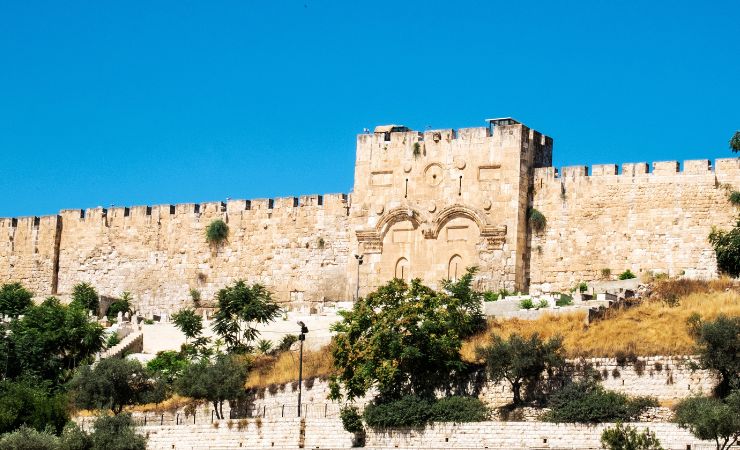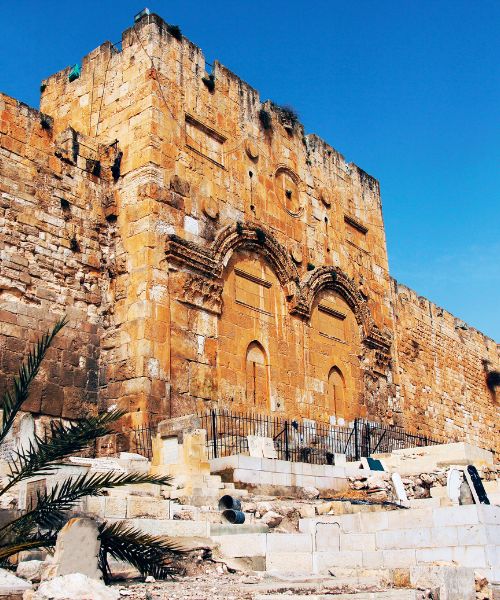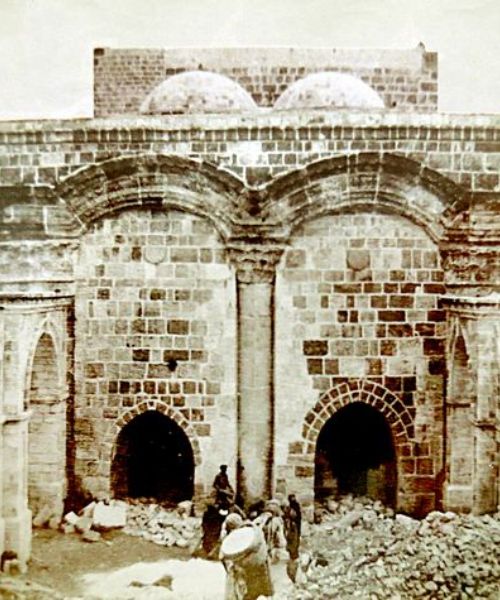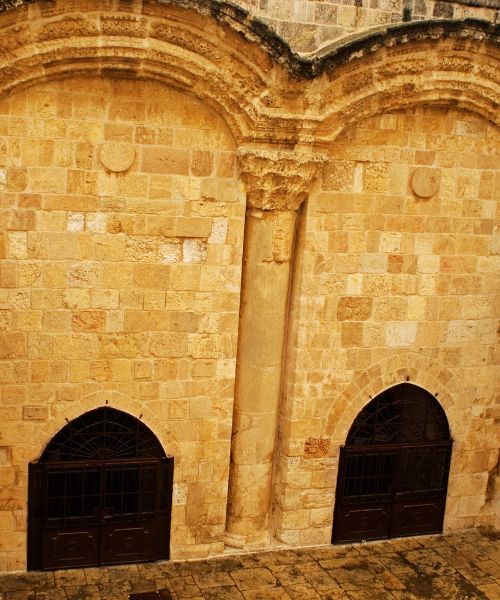Golden Gate: A Gate for the Messiah
Introduction
The Golden Gate is known as Sha’ar Harahamim ‘Gate of Mercy’, in Hebrew; Bab al-Dhahabi or Bab al-Zahabi . Another name is the ‘Gate of Eternal Life’. meaning ‘Golden Gate’ in Arabic, and the ‘Golden Gate’ or ‘Eastern Gate’ in English.
It is extremely important and has rich religious significance for all the three monotheistic religions.
Location
The Golden Gate is the only sealed gate in the Old City of Jerusalem. It located in the east of the Old City opposite the Mount of Olives, south of the Lion’s Gate. and overlooks the Kidron Valley. It is part of the Temple Mount.

Significance in Monotheistic Religions
Judaism
For Jews, this gate holds immense importance. Jewish literature details that when the Messiah arrives, he will enter Jerusalem through the Eastern Gate. T Messiah is the promised deliverer of the Jewish nation as prophesied in the Jewish bible. Talmudic literature also refers to this gate as the Shushan Gate, due to its Eastern direction toward the Persian city (now modern-day Iran). There’s also a belief that on Yom Kippur (Day of Atonement), a Temple messenger was sent through this gate with a sacrificial lamb to the desert.
Christianity
In Christian traditions, the Eastern gate of the Old City, or the “Golden Gate,” is the place where the parents of Mary met after the Annunciation. This gate also holds messianic importance as some Christian texts detail that Jesus passed through this gate on Palm Sunday.
Islam
For Muslims, the gate is referred to as Bab al-Dhahabi or Bab al-Zahabi (meaning Golden Gate or sometimes referred to as the Gate of Eternal Life). Some believe that this is the site of Allah’s final judgment and the site of future resurrection.



The Golden Gate: Historical Background
Ancient Beginnings
The origins of the Golden Gate can be traced back to the time of King Solomon’s temple in the 10th century BC, where an “east gate” existed, likely in the vicinity of the later Golden Gate. During the Second Temple period, a gate named Shushan (or Susa) was constructed on the eastern side, funded by the Jewish community in Persia. This gate was later destroyed by the Romans in 70 AD during the temple’s destruction.
Roman, Byzantine and Arab Influence
The Temple was renovated during the time of King Herod but on 70AD, it was destroyed by the Romans. The ruins of the ancient gate saw a revival during the Byzantine era, with a new gate constructed over them in the 6th or 7th century. After defeating the Persians, The Byzantine Emperor Heraclius entered through this gate while barefoot with the remains of the True Cross (the Cross identified by Queen Helena mother of Constantine the Great in the 4th Century) in 628 AD. The cross had been captured by the Persians fourteen years earlier. This event is celebrated as the Elevation of the Holy Cross.
Crusaders
During the times of the Crusaders, the Golden Gate was open only twice a year (on Palm Sunday and on the Holy Cross Celebration. But after they lost Jerusalem to the Muslims (Saladin), the gate remained closed.
Sealing and the Ottoman Era
The Mamluks (13th Century) closed the gate with iron bars. But the current structure of the Golden Gate largely dates back to the Ottoman period in the 16th century when the gate in its present form was sealed with stones by the Ottoman Sultan Suleiman in 1541 in an effort to build what is now the Old City walls.
The exterior face of the gate, as it remains from the 16th century, is a sealed double entrance that leads into two vaulted halls. The sealing of the gate by Suleiman is believed to have been a defensive move. As derived from Jewish literature, the gate is said to be the point at which the Jewish Messiah will enter the city of Jerusalem, and therefore, to prevent this from occurring, the sultan sealed the gate.
Another perspective suggests it was a military decision to deter invaders.. The Ottomans further fortified the closure by establishing a cemetery in front of the gate, based on the belief that the Messiah would not traverse through a cemetery.
The Graveyard in Front of the Golden Gate
The presence of a graveyard in front of the gate is significant. It’s believed that the graveyard was established as a deterrent for the Jewish Messiah’s entrance, given the Jewish laws of ritual purity.
Nearby Sites
The Golden Gate is a magnificent representation of Islamic architecture from the Ottoman period. It features:
- Central Arch: The gate is dominated by a large central arch, flanked by smaller side arches.
- Stone Construction: The entire structure is made of stone, showcasing the durability and craftsmanship of the era.
- Decorative Elements: Intricate carvings and Arabic inscriptions adorn the gate, adding to its aesthetic appeal.
- Interior: Behind the sealed gate lies a gatehouse with a staircase leading to the higher platform of the Temple Mount. This gatehouse contains ancient columns and decorated capitals1.
Sources and Additional Reading
Wikipedia – Damascus Gate
Jerusalem Foundation – Damascus Gate
Nearby Sites
- Mount of Olives: This it’s believed to be the place where Jesus entered Jerusalem. Many Stories from the New Testament take place there.
- Garden of Gethsemane: Located at the foot of the Mount of Olives, it’s where Jesus prayed the night before his crucifixion. The Church of All Nations and the Grotto of Gethsemane are located in the gardens.
- Church of Mary Magdalene: A stunning Russian Orthodox church with golden domes, it stands as a tribute to Mary Magdalene.
- Kidron Valley: This Kidron Valley wraps the City of David from the east and holds significant burial tombs like the Tomb of Absalom, The Tomb of Benei Hezir, and the Tomb of Zechariah.



